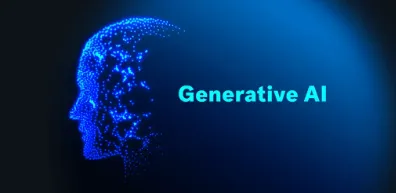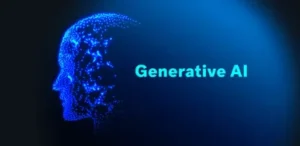Generative AI, a subset of artificial intelligence, is allowing industries to evolve and changing how problems and ideas are solved. From creating photorealistic images to generating music and text and developing unique products, AI text and generative AI are fundamental to a technological revolution.. At the core of this change are generative AI development firms, which initiate, advance, and implement various such complex systems and solutions, including AI image generators that produce stunning visuals with remarkable accuracy.
Contents
What Is Generative AI?
Generative AI deploys to systems that can generate content – images, text, sound, or visuals – on learning patterns and structures of data. Algorithms that belong to modern deep learning methods include but are not limited to Generative Adversarial Networks (GANs), Variational Autoencoder (VAEs), and advanced language models such as OpenAI’s GPT series. Some of these models train using big data and predict original outcomes that resemble creative thinking and decision-making prowess.
The application of generative AI development companies
Generative ai development company focus on creating, developing, and deploying AI models in an organization and individually to harness artificial intelligence creativity. Their contributions span various domains, including:
1. Custom AI Solutions
These companies construct unique AI systems to solve certain business issues. Whether creating chatbots, content generation applications, or launching specific marketing campaigns, they have to ensure that the technology fits the client’s goals.
2. Industry-Specific Innovations
Some of the industries in which generative AI is applied include healthcare, entertainment, retail, and finance. AI development companies drive innovation by:
Healthcare: Co-creating tools for drug discovery platforms, biomedical image analysis and delivery of patient care.
Entertainment: Creating realistic characters, effects and music.
Retail: Creating digital shopping avatars and individualized item suggestions.
3. Research and Development
That is why these companies do not remain indifferent to the development of AI technologies as they finance research. This work leads to innovations such as better algorithms, ethical best practices in artificial intelligence, and enhanced models.
4. Ethical and Responsible Approaches to Artificial Intelligence Implementation
One key undesirable effect of applying generative AI is preventing unethical and irresponsible usage. Development companies ensure that the created systems do not infringe on users’ privacy, prejudice them, or misuse them. They also help answer questions about the optimal deployment of effective risk prevention measures since generative AI is deemed risky.
About this paper: The emergence of generative AI development companies has brought relief to the market owing to the complexity of AI technology.
Despite their transformative potential, generative AI development companies face several challenges:
1. Data Dependency
One major disadvantage of generative AI models is that they need large amounts of good-quality data for model training. It’s always a struggle to obtain pertinent and diverse datasets and datasets that have been excluded from any prejudice.
2. Computational Costs
A huge amount of computation is needed to train generative AI models. The price of the hardware, the required energy, and the cloud services can also be an issue, especially for small companies.
3. Ethical Concerns
Generative AI can be used for negative purposes, for example, when deepfakes are created or fake news is published. The ethics of it need to be considered and measures to handle misuse put in place.
4. Regulatory Compliance
Due to the recent focus on AI solutions, organizations must follow new rules and regulations concerning AI technologies. The public has confidence in the outcomes due to compliance rules, which involve constant legal stipulations changes.
Best Practices and Case Studies of Generative AI
Several generative AI development companies have made significant contributions:
OpenAI: Open AI has created the GPT models, which advanced natural language processing and are now used in applications such as chatbots, content writers, and code writers.
DeepMind: Having the focus on the priority AI research, DeepMind created outstanding systems in healthcare and gaming.
Runway ML: Built for the creative industries, Runway ML offers immediate solutions to video editing, image generation, and more.
The Future of Generative AI Development Firms
But as generative AI deepens, so does the impact of the development companies come into play even more. Emerging trends include:
AI for Sustainability: Benefit from AI to solve environmental issues like fluid energy efficiency and fight climate change.
Increased Accessibility: To make them more easily accessible and cost-efficient for small businesses and individual content producers using generative AI tools.
Enhanced Collaboration: Designing AI systems for work integration to complement rather than compete with human imagination and innovation.
Conclusion
Companies designing and developing generative AI are now at the cutting edge of a new era in technology– in how we progress, communicate and innovate in the workplace and elsewhere. They are not just developing smart AI systems but are advancing a future where intelligent machines augment human capacity through innovation, ethical integration, and context-specific solutions. In the future, it is clear that man+AI collaborations will open up new opportunities and once again redraw the limits of scientific advancement.










